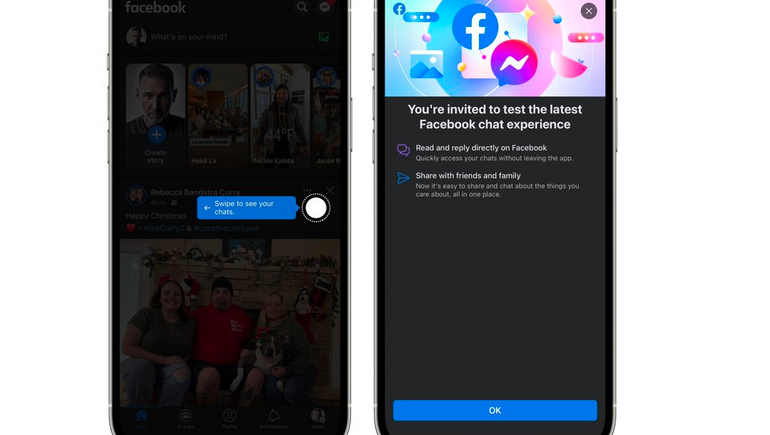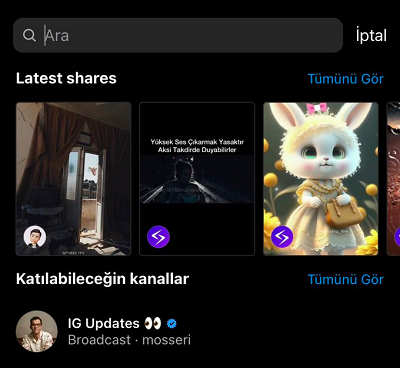SOCIAL
More Social Media Discussion is Moving to Messaging, Which is Important for Marketers to Note

Messaging is the new social feed, with more and more users opting to share updates via more intimate circles within DMs, as opposed to posting to their main, public stream.
A key reason behind this is the divisive nature of conversations within social apps, with more political and topical discussion leading to argument, and often causing more angst than it’s worth.
You’ve likely experienced this yourself – how many times have you felt an urge to post something, started typing it out, then thought ‘nah, not worth it’? You might have an opinion on the issue of the day, but is that opinion strong enough to defend your position if you get challenged, and do you really want to wade into an argument with randoms in the comments?
For most, they don’t – which then pushes more people towards more private sharing. Because most people have simply had enough of the back and forth that can come with public posting. And that’s now leading to a significant shift in focus for the main social apps.
Meta, which has seen a big shift towards engagement within messaging, is leaning into this, with new additions like ‘Channels’ on Instagram, which is essentially broadcast messaging, and the re-integration of Messenger into the main Facebook app.
That could have big impacts on the way that people interact across Facebook and Instagram – while Instagram’s also experimenting with enhanced sharing options in DMs, like highlighting previously shared posts within your inbox.

The implications of such for marketing are not entirely clear, as people are still discovering content on Facebook and IG, but are sharing what they find in messages. That suggests that social feeds are still solid options for reaching your audience, but for interaction, brands may want to consider how they can incorporate DMs, and provide more ways for customers to message them directly, as opposed to seeking direct engagement in app.
Which could also skew your metrics. As Meta makes a bigger push on DM interaction, that will inevitably have some impact on post engagement, as people will increasingly be sharing in private, as opposed to commenting. For example, you’ll often see people tagging each other in the comments, but over time, that’s reducing in frequency, as people forward the link via message instead.
That’ll likely see your page engagement decline, in terms of comments, while people seeing such in a message may also be less likely to click through for further context, as they can see the full link preview within the messaging thread. Previously, they would have had to visit your page to understand the tag, but now, with links in message streams, that won’t be the same, which could mask the full impact of your Facebook and IG reach.
So how do you measure it? Well, it depends on your focus goal, but click-throughs and page visits will likely become more critical indicators, along with, of course, conversions and other direct metrics. It could well be that you end up generating a heap of conversions via messaging discussion, which could be confusing to track, at least based on traditional metrics.
But this, increasingly, is the way that Meta is headed, and as more interactions shift to DMs, other platforms will follow suit.
Which means that you need to consider how people are connecting, how they’re discussing your products, and how they’re seeking to connect.
There may well be new opportunities in direct chat discussion, and building more dedicated, direct engagement methods.
SOCIAL
Snapchat Explores New Messaging Retention Feature: A Game-Changer or Risky Move?

In a recent announcement, Snapchat revealed a groundbreaking update that challenges its traditional design ethos. The platform is experimenting with an option that allows users to defy the 24-hour auto-delete rule, a feature synonymous with Snapchat’s ephemeral messaging model.
The proposed change aims to introduce a “Never delete” option in messaging retention settings, aligning Snapchat more closely with conventional messaging apps. While this move may blur Snapchat’s distinctive selling point, Snap appears convinced of its necessity.
According to Snap, the decision stems from user feedback and a commitment to innovation based on user needs. The company aims to provide greater flexibility and control over conversations, catering to the preferences of its community.
Currently undergoing trials in select markets, the new feature empowers users to adjust retention settings on a conversation-by-conversation basis. Flexibility remains paramount, with participants able to modify settings within chats and receive in-chat notifications to ensure transparency.
Snapchat underscores that the default auto-delete feature will persist, reinforcing its design philosophy centered on ephemerality. However, with the app gaining traction as a primary messaging platform, the option offers users a means to preserve longer chat histories.
The update marks a pivotal moment for Snapchat, renowned for its disappearing message premise, especially popular among younger demographics. Retaining this focus has been pivotal to Snapchat’s identity, but the shift suggests a broader strategy aimed at diversifying its user base.
This strategy may appeal particularly to older demographics, potentially extending Snapchat’s relevance as users age. By emulating features of conventional messaging platforms, Snapchat seeks to enhance its appeal and broaden its reach.
Yet, the introduction of message retention poses questions about Snapchat’s uniqueness. While addressing user demands, the risk of diluting Snapchat’s distinctiveness looms large.
As Snapchat ventures into uncharted territory, the outcome of this experiment remains uncertain. Will message retention propel Snapchat to new heights, or will it compromise the platform’s uniqueness?
Only time will tell.
SOCIAL
Catering to specific audience boosts your business, says accountant turned coach

While it is tempting to try to appeal to a broad audience, the founder of alcohol-free coaching service Just the Tonic, Sandra Parker, believes the best thing you can do for your business is focus on your niche. Here’s how she did just that.
When running a business, reaching out to as many clients as possible can be tempting. But it also risks making your marketing “too generic,” warns Sandra Parker, the founder of Just The Tonic Coaching.
“From the very start of my business, I knew exactly who I could help and who I couldn’t,” Parker told My Biggest Lessons.
Parker struggled with alcohol dependence as a young professional. Today, her business targets high-achieving individuals who face challenges similar to those she had early in her career.
“I understand their frustrations, I understand their fears, and I understand their coping mechanisms and the stories they’re telling themselves,” Parker said. “Because of that, I’m able to market very effectively, to speak in a language that they understand, and am able to reach them.”Â
“I believe that it’s really important that you know exactly who your customer or your client is, and you target them, and you resist the temptation to make your marketing too generic to try and reach everyone,” she explained.
“If you speak specifically to your target clients, you will reach them, and I believe that’s the way that you’re going to be more successful.
Watch the video for more of Sandra Parker’s biggest lessons.
SOCIAL
Instagram Tests Live-Stream Games to Enhance Engagement

Instagram’s testing out some new options to help spice up your live-streams in the app, with some live broadcasters now able to select a game that they can play with viewers in-stream.
As you can see in these example screens, posted by Ahmed Ghanem, some creators now have the option to play either “This or That”, a question and answer prompt that you can share with your viewers, or “Trivia”, to generate more engagement within your IG live-streams.
That could be a simple way to spark more conversation and interaction, which could then lead into further engagement opportunities from your live audience.
Meta’s been exploring more ways to make live-streaming a bigger consideration for IG creators, with a view to live-streams potentially catching on with more users.
That includes the gradual expansion of its “Stars” live-stream donation program, giving more creators in more regions a means to accept donations from live-stream viewers, while back in December, Instagram also added some new options to make it easier to go live using third-party tools via desktop PCs.
Live streaming has been a major shift in China, where shopping live-streams, in particular, have led to massive opportunities for streaming platforms. They haven’t caught on in the same way in Western regions, but as TikTok and YouTube look to push live-stream adoption, there is still a chance that they will become a much bigger element in future.
Which is why IG is also trying to stay in touch, and add more ways for its creators to engage via streams. Live-stream games is another element within this, which could make this a better community-building, and potentially sales-driving option.
We’ve asked Instagram for more information on this test, and we’ll update this post if/when we hear back.
-

 SEARCHENGINES6 days ago
SEARCHENGINES6 days agoGoogle Core Update Volatility, Helpful Content Update Gone, Dangerous Google Search Results & Google Ads Confusion
-

 SEO6 days ago
SEO6 days ago10 Paid Search & PPC Planning Best Practices
-

 MARKETING7 days ago
MARKETING7 days ago2 Ways to Take Back the Power in Your Business: Part 2
-

 MARKETING5 days ago
MARKETING5 days ago5 Psychological Tactics to Write Better Emails
-

 SEARCHENGINES5 days ago
SEARCHENGINES5 days agoWeekend Google Core Ranking Volatility
-

 SEO6 days ago
SEO6 days agoWordPress Releases A Performance Plugin For “Near-Instant Load Times”
-

 MARKETING6 days ago
MARKETING6 days agoThe power of program management in martech
-
SEARCHENGINES4 days ago
Daily Search Forum Recap: April 15, 2024













